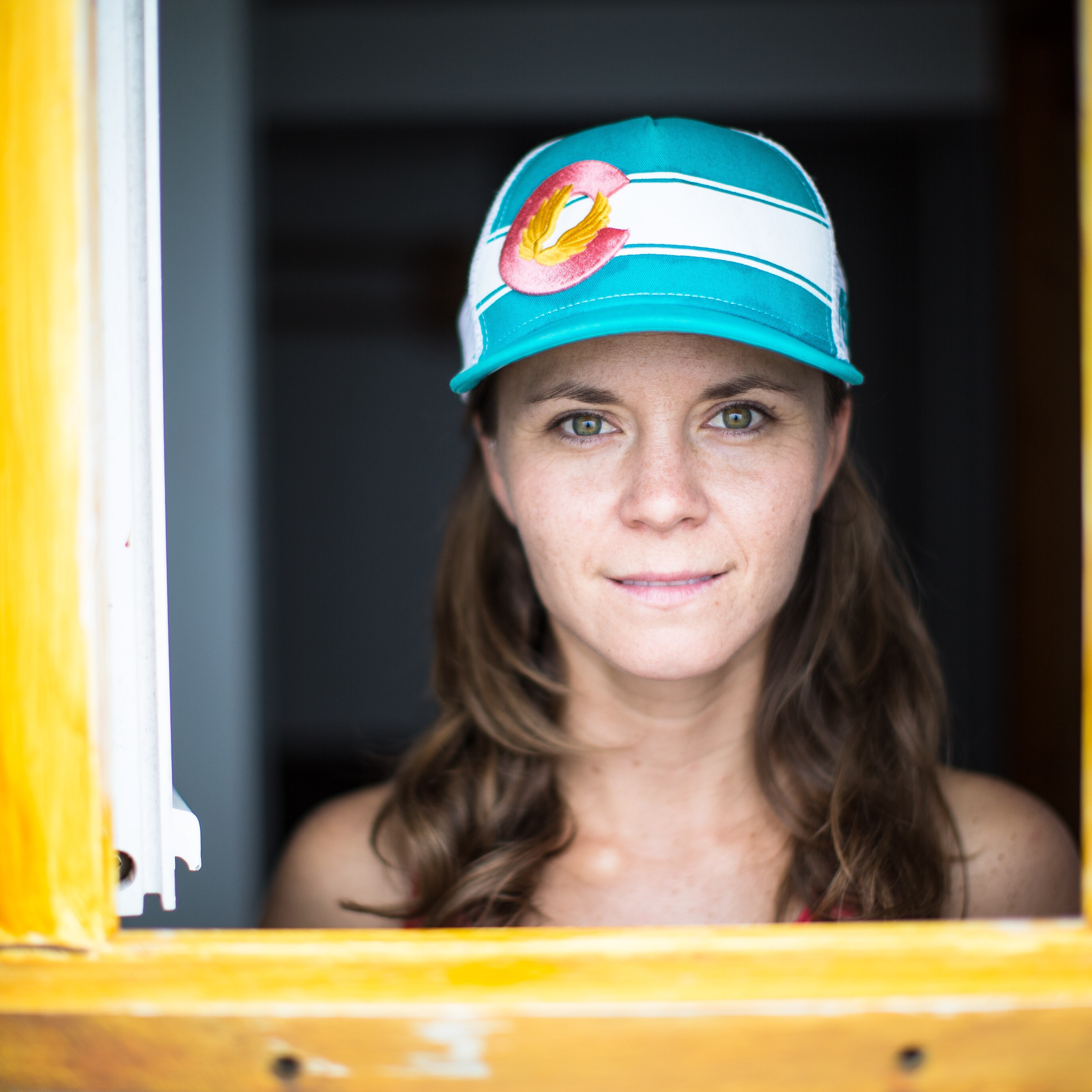Staff Picks
Find quick recommendations below or scroll down for in-depth reviews.
- Best Small Soft Cooler: REI Co-op Campwell 18 L Folding Cooler
- Best Large Soft Cooler: YETI Hopper M30 2.0 Soft Cooler
- Best Budget Hard Cooler: Igloo ECOCOOL 30 Cooler
- Best Large Hard Cooler: Rugged Road 65 V2 Cooler
- Best Wheeled Cooler: YETI Roadie 32
- Best Cooler for Ice Retention: YETI Tundra 45
- Best Electric Cooler: Dometic CFX5 55 Powered Cooler
Best Soft-Sided Coolers
Best Small Soft Cooler
REI Co-op Campwell 18 L Folding Cooler
Cooler type Soft-sided
Capacity 18 liters
The Campwell 18L Cooler from REI Co-op is a versatile solution for keeping small parties on short outings fed and hydrated (think: paddleboarding, soccer games, hammocking). This 18-liter, soft-sided cooler is slightly larger than its Pack-Away predecessor with many of the same great features. With two oversize handles and a padded, adjustable shoulder strap, the Campwell 18L Cooler also works as a tote bag for carrying groceries. One of our editors used the tote as a carry-on bag when she traveled to her kid's baseball tournament; she managed to keep the team hydrated with cold drinks over several days of play. If space is of the essence, basic toggles on either side convert it into a cube for easier baggage Tetris. (You do lose a little space on the inside when assembled like a cube). Still, we love that the soft-sided design and toggles also allow you to store the cooler flat when empty, making it super easy to fit inside your suitcase or stash away when not in use. It's also available in the 8L size. Buy here.
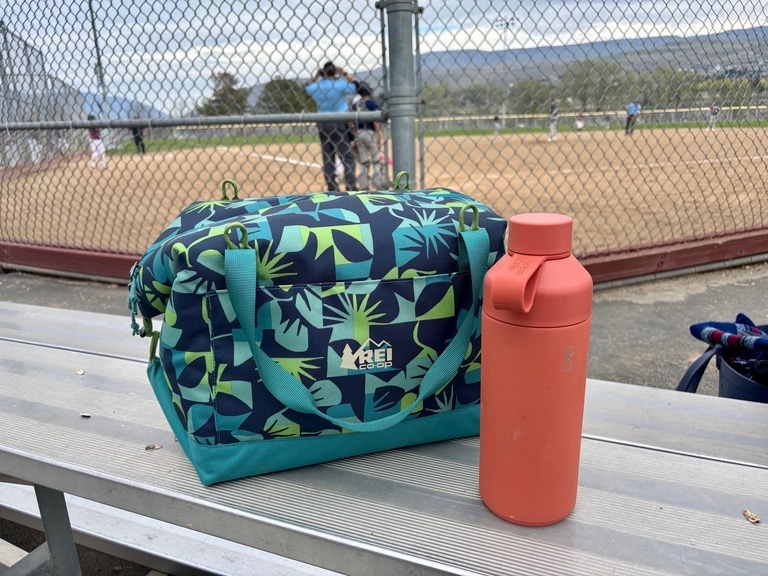
Best Large Soft Cooler
YETI Hopper M30 2.0 Soft Cooler
Cooler type Soft-sided
Capacity 28 liters (about 42 cans)
Weight 7 lbs.
If you’re taking your family on an adventure day, the YETI Hopper M30 2.0 Soft Cooler is our top pick. With a 28-liter capacity, you can cram a whopping 42 cans inside (with no ice), so there's plenty of space for a day’s worth of drinks and sammies for all. Perhaps most excitingly, the Hopper M30 2.0 saw a major upgrade that lifelong YETI fans will love: a magnetic enclosure in place of the old-school zipper that used to chew your arm off. “Compared to the old zipper, this is a huge upgrade,” reports one customer-reviewer. And the brand's reputation for long-lasting cold tolerance continues, thanks to closed-cell foam insulation that keeps our bevvies frosty all day long. (Or two days, as one reviewer noted: “Full day of softball and then the second day on the lake and still ice.”) Tradeoff: The Hopper comes with the traditionally high YETI price tag, but this cooler makes the case that quality doesn’t come cheap. Buy here.
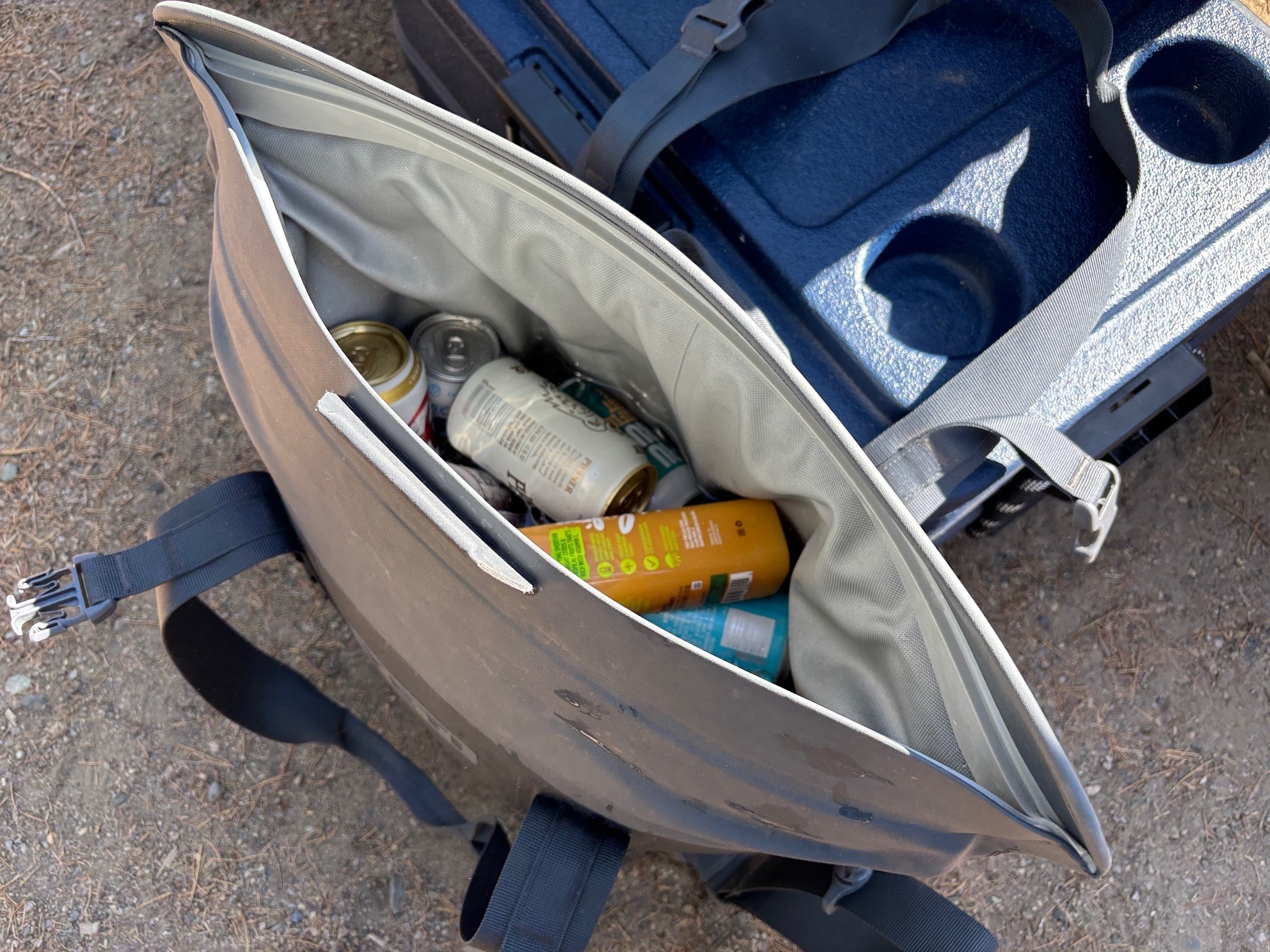
Best Hard-Sided Coolers
Best Small Hard Cooler
Igloo ECOCOOL 30 Cooler - 30 Quarts
Cooler type Hard-sided
Capacity 28 liters (roughly 22 cans)
Weight 6 lbs. 6.4 oz.
Keep your money in your bank account and plastic out of the landfills. That's the idea behind the Igloo ECOCOOL 30, which is constructed with postconsumer recycled resin (trashed yogurt cups and milk jugs) and costs about the same as the three 12-packs you can easily stow inside it with room for ice and more. The 28-liter capacity (holding 41 cans) is just big enough for an overnight trip, although most reviewers prefer its compact size for road trips and fancy day jaunts. (It's tall enough to stack two 12-ounce cans or a 2-liter bottle, and will help keep snacks fresh for up to several days.) Note: A few customer reviewers pointed out that the handle can pop off, but is easily fixed. Buy here.
Best Large Hard Cooler
Rugged Road 65 V2 Cooler
Cooler type Hard-sided
Capacity 42 liters (roughly 65 cans)
Weight 13 lbs.
If you’re searching for the titan of the cooler world, look no further. The Rugged Road 65 cooler is a behemoth with a whopping 42-liter capacity. That’s large enough to hold up to 65 cans for a weekend adventure, camping trip or one heckuva party at the beach. But, the real sorcery: Even though it’s the second-largest cooler in this guide, it’s the second lightest hard-sided cooler at a mere 13 pounds. This is due to the Rigorite™ coating, a proprietary spray on the exterior that's so burly it was originally designed to bombproof the walls of the Pentagon. (True story!) “The lightweight nature of this cooler means I can carry it by myself rather than needing a buddy to help me out,” reports one customer-reviewer. Inside you’ll find a dry goods snack rack and a sliding divider, making it easier to organize your food and keep meat from touching your produce. Detach the lid and flip it over and you've got a ready tabletop with four beverage holders. If you’re looking for yet another reason to consider the 65 V2, here’s a fun fact: This beast of a cooler actually floats. Buy here.
Best Wheeled Cooler
YETI Roadie 32 Wheeled Cooler
Cooler type Hard-sided
Capacity 31 liters (roughly 51 cans)
Weight 24 lbs. 8 oz.
The travel-friendly Roadie cooler series from YETI has been a longtime favorite, but it’s now available in this new moderate size. The 32-quart model hits the sweet spot as a perfect capacity for day trips and weekend adventures when you don’t need to lug the kitchen sink. Like others in the Roadie lineup, this version comes with a periscoping handle that easily slides out so you can wheel it through your campsite or down to the lakeshore with ease. Inside, you’ll find one dry goods basket and enough vertical space for a 2-liter soda or even a wine bottle. While other YETI coolers are rotomolded, the Roadie series uses less-durable but lighter injection molding, and still packs a respectable 3 inches of insulation. End result: a still-burly and versatile wheeled cooler that will get you where you (and a group of well-hydrated friends) need to go. Buy here.
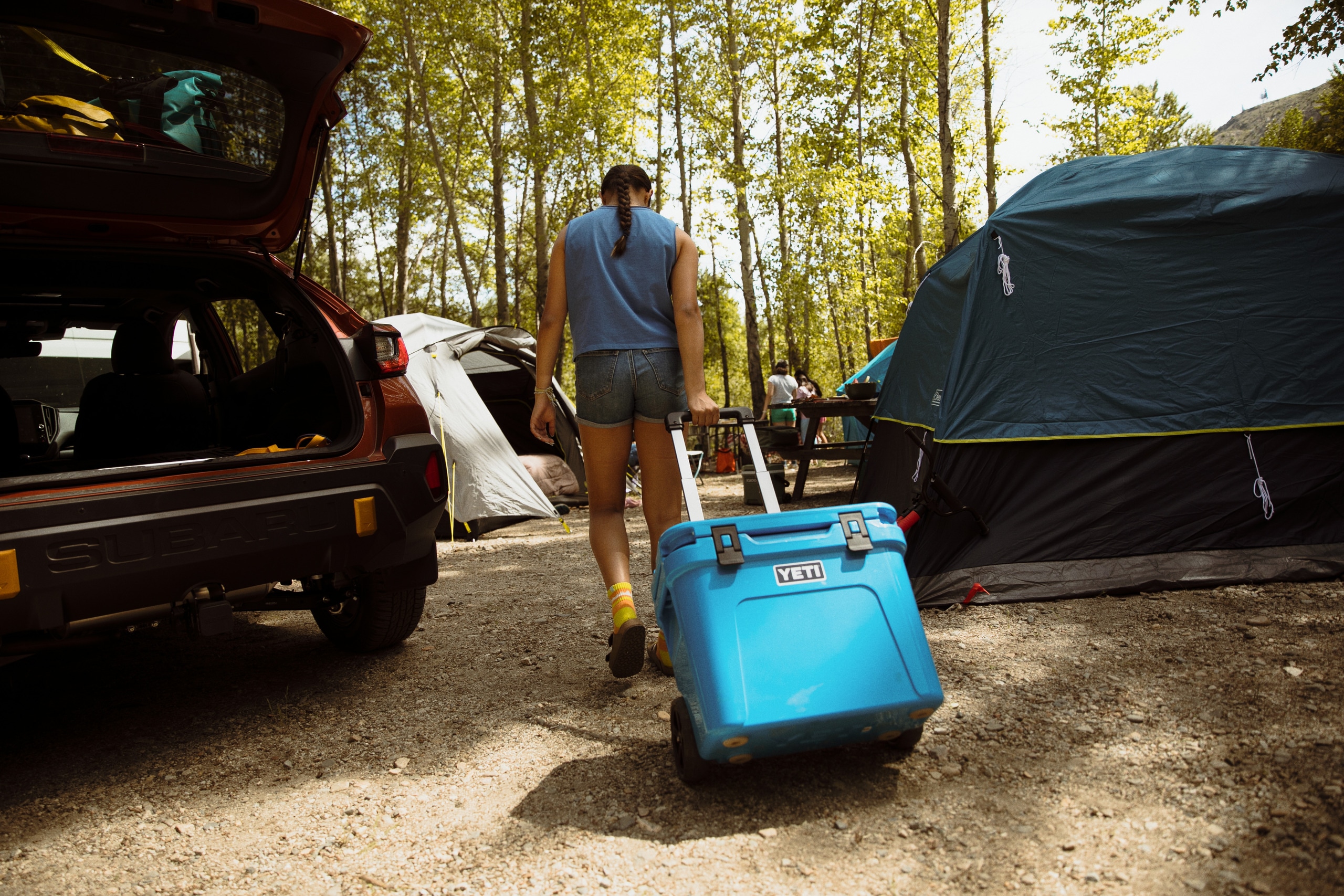
Best Cooler for Ice Retention
YETI Tundra 45 Cooler
Cooler type Hard-sided
Capacity 32.9 liters
Weight 23 lbs.
You can’t tote a deep freezer into the wilderness, but consider this cooler your next best option for keeping ice cold for a long time. The YETI Tundra 45 uses rotomolding, arguably the gold standard of premium coolers. This means you’ll find an outer shell fused to the insulation without any seams or breaking points, adding to the durability. (It’s the same process used on whitewater kayaks, so it’s gotta be tough!) This also means there aren’t any seams for cold air to escape, so your ice will typically stay cooler for longer. A freezer-quality gasket around the lid ensures a tight seal, and two rubber T-latches make it easy to open and close with one hand. A hard-sided cooler this tough is useful beyond food preservation: “I often use it as a step stool around camp to hang lights, tarps or a dog run between some trees,” says REI Training and Standards Coordinator Adam Thomas, who uses his cooler for backyard parties and car camping trips. The ultimate testament to its durability: If you’re camping in bear country, the Interagency Grizzly Bear Committee certified the Tundra as a bear-resistant food container if you add a pair of padlocks to the corners. (Read more about bear-safe food storage in Bear Canister Basics.) Buy here.
Best Electric Cooler
Dometic CFX5 55 Powered Cooler + Icemaker
Cooler type Hard-sided electric
Capacity 55 liters (roughly 84 cans)
Weight 47 pounds
No ice, no problem. It doesn't matter if you're overlanding for a week or living the permanent road trip life in a camper van; the CFX5 55 from Dometic will keep your condiments cold without a single cube of ice—though this version does have an icemaker should you want a few cubes for your camp bevies. Unlike other coolers on this list, the CFX5 55 is electrically powered like a refrigerator. When you're on the go, plug it into your car and use the accompanying app to control the temperature settings via Bluetooth. (The compressor cooling technology goes as low as -7°F for a deep freeze.)
"Quieter than one of those mini fridges you find in hotels. I rarely noticed that it was running," says one customer-reviewer. "The ice in the three wire compartments stayed frozen with no problem."
The 55-liter cooler holds up to 84 cans, but thanks to the dual compartments (each with a wire basket, one of which has a removable divider), it's easy to keep your goods organized. Buy here.
Buying Advice for Coolers
Shopping for a new cooler can be a daunting affair. Here are a few factors to consider.
Cooler Construction
Your cooler is designed to seal the heat out (rather than keep the cold in). But the materials used to that end differ. Here are the main types, and each one comes with its own pros and cons.
Soft-Sided Coolers
As you might have guessed, these coolers (like the REI Co-op Campwell 18 L Folding Cooler and YETI Hopper M30 2.0) are constructed with soft materials in the walls rather than the more traditional hard plastic. This means they tend to be lighter and easier to carry and store than their hard-sided counterparts. In return, they can be less durable and less efficient at keeping your stuff chilled.
Soft coolers tend to be best for day trips—where you can enjoy their easier carrying and packability without running the insulation to its limit.
Hard-Sided Coolers
Hard-sided ice chests like the YETI Tundra 45 and Rugged Road 65 V2 cooler are far less portable than their soft-sided brethren but they typically maintain insulation for longer and protect contents better. Hard coolers tend to come in larger sizes, so it's easier to feed more people. And, a hard-sided cooler can double as a seat in a pinch. Premium hard-sided coolers offer Arctic-level insulating ability, allowing ice to last for days. (Additionally, some brands like YETI use a process called rotomolding that fuses a seamless outer plastic shell with the insulation for an airtight seal.)
In general, a hard-sided cooler is your best bet unless it's not. Some can be heavy to haul around. In other words, consider a hard cooler, with its superior insulation, over a soft-sided cooler unless you really need or want the portability and packability of a softie.
Backpack coolers
These are outfitted with shoulder straps and even hip belts for hands-free comfortable transport. Some backpack coolers have added features like external pockets or lash straps so you can take additional gear with you, like a camp blanket or picnic supplies.
Features
Different coolers come with different features, but you probably don't need them all. Depending on your preferences, consider niceties like cup holders, tie-down toggles or interior organizational systems like wire baskets or plastic compartments. Other features, such as etched rulers to measure fish, are more specific to your chosen activities. The more features a cooler has, the more expensive it's likely to be. Plan accordingly.
Wheeled coolers
Some hard-sided coolers roll to ease transport when they’re loaded. Mechanisms vary from small plastic wheels to inflatable tires with all-terrain tread. Some rolling coolers can even be hitched to your bike with an added accessory. The YETI Roadie 32 is the only cooler on wheels in this list.
Electric coolers
Newer to market, powered coolers like the Dometic CFX5 55 Powered Cooler use electricity to chill the interior rather than ice, making it easier to stay off the grid longer. This means it's also possible to travel with freezer goods (like ice cream!) since the electricity allows you to maintain a significantly lower temperature than you can with loose ice. However, electric coolers weigh significantly more than traditional hard- or soft-sided coolers, and cost a lot more too.
Methodology
We picked the top coolers at REI based on customer feedback as well as our own rubric for the best cooler for each activity. Our favorites include options for short jaunts, longer hikes, days on the river, extended road trips and everything in between, as well as a budget option. These seven coolers from YETI, Igloo, Dometic, REI Co-op and more are the picks we'd recommend to anyone.
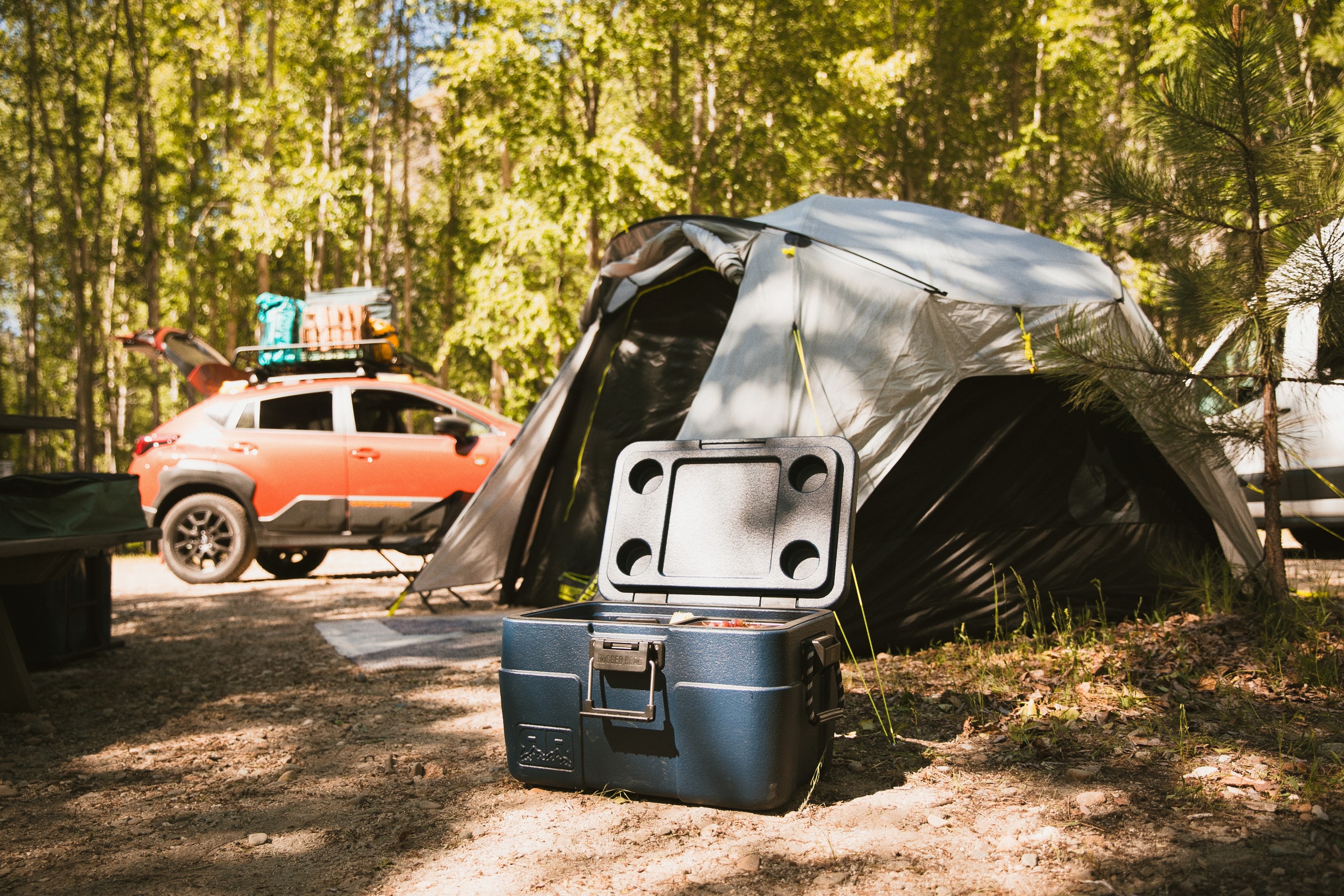




![Campwell 18 L Folding Cooler [Interior]](/media/8dc0df4a-873e-4482-9bb1-cec6998c9b2d/?size=440)






![ECOCOOL 30 Cooler - 30 Quarts [Interior (Sage Green)]](/media/1f4914fb-da93-4b1a-947a-0500ee9a5194/?size=440)
![ECOCOOL 30 Cooler - 30 Quarts [Back view (Sage Green)]](/media/d4a3f728-1b24-4310-8cb6-89e4bf5937b1/?size=440)







![Tundra 45 Cooler [ ]](/media/d9bb9cf1-99e9-4eb9-809c-896d91ec0c44/?size=440)
![Tundra 45 Cooler [Tough rotomolded polyethylene]](/media/1617ef0b-623c-4059-ab3a-590af75aa2e6/?size=440)
![Tundra 45 Cooler [Open (Tan)]](/media/7ae4635d-5973-4f2c-8935-5eb5ff4f15ea/?size=440)
![Tundra 45 Cooler [Handle, latch, and padlock holes (Tan)]](/media/efa607c9-544e-4b9c-bce2-3fa87239ac2d/?size=440)






